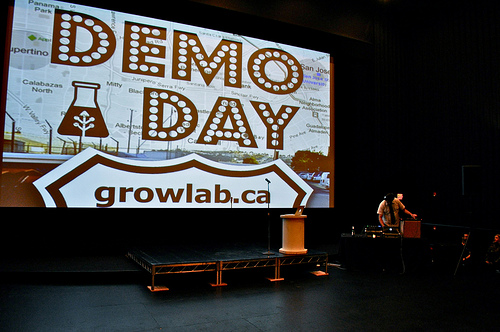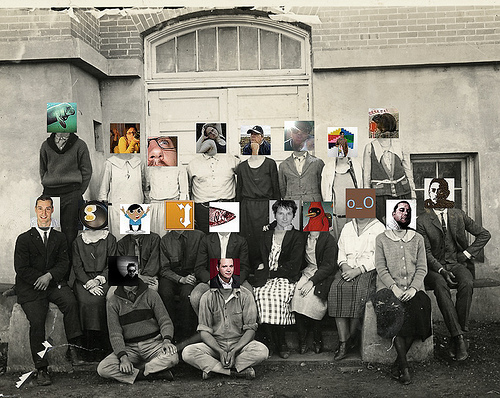Editor’s Note: Gavin Uhma is the CTO of GoInstant.com, a Halifax, NS based startup.
Technical Co-Founders need to find their voice.
I’ve been in the fray of building a startup for over a year now and normally I don’t think to write publicly. I usually feel like I am already too busy communicating with the team, programming, and planning. In that year I’ve come to the realization that there are not many resources out there for technical co-founders.
We are constantly wrestling with make-or-break decisions: What should you be doing at each stage in your company? How do your responsibilities change as the team grows from the founders to the first hires? What about at a team of 10? Of 50? Of 100?
I can’t help with 50 or 100 yet, but I can help you get from the idea to a founding team, to a team of 10, and I will continue to blog at each stage of growth as I learn what I need to do next.
This is my second time growing a team to this size and I know for certain that we’ve created more value this time.
Why are CEOs toilet scrubbers?
 Jevon is more qualified to answer that than me, but in the early stages a CEO needs to keep the fridge stocked and the bathroom clean (a job description Jevon reluctantly accepts as true). They create a cool office environment. They are the Janitor, Caterer, Secretary, Executive Assistant, and more. A startup CEO handles PR, HR, product management, recruiting, marketing, investor relations, accounting, and anything else that needs to be done to keep the gears of a startup moving smoothly.
Jevon is more qualified to answer that than me, but in the early stages a CEO needs to keep the fridge stocked and the bathroom clean (a job description Jevon reluctantly accepts as true). They create a cool office environment. They are the Janitor, Caterer, Secretary, Executive Assistant, and more. A startup CEO handles PR, HR, product management, recruiting, marketing, investor relations, accounting, and anything else that needs to be done to keep the gears of a startup moving smoothly.
There are plenty of resources out there for early stage Business Co-Founders. Everyone loves and appreciates CEOs already. They are by default, the face of the company.
I’m starting to blog so we can all learn more about the responsibilities of startup CTOs.
Why are CTOs so awesome?
Technical Co-Founders are building the product. We’re pulling late nights so that demos run smoothly the next day. We’re building what will be bought and sold. Investors are attracted to our efforts. Customers find value in what we build. We are the VP Engineering, Project Manager, Product Manager, QA Engineer, DevOps, UX Designer, UI Designer, DB Engineer, Recruiter, etc. We’re responsible for performance, security, stability, front-end, back-end, training, technology roadmaps, patent filings, and more.
How do CTOs create assets?
- We solve difficult problems with new technology to fulfill a big vision.
- We attract engineers who are better than us to accelerate the roadmap to that vision.
- We secure the intellectual property and data of our applications and users.
The end result is an asset of true value — An elegant and novel solution developed by a team who have grown to be absolute experts in the problem domain.
Yin and Yang
The truth is I can’t talk about what our technical team does at GoInstant without constantly being reminded of what Jevon, Dave and Ben do. One side is just not effective without the other.
It’s important to emphasize that none of the assets matter if you never find your customers, investors, partners and potential acquirers. You might build a beautiful technology, but without a product focus and real customers, technology rarely wins. Business Co-Founders, do your thing.
Value
There needs to be substance behind popularity or you’ll wash up quickly. You create value by packaging up and presenting the collection of assets in a meaningful way.
If you want to build a valuable company you need people to care about what you’re doing. You need customers who value your vision, but ultimately there needs to be something impressive under the hood.
There are many startups that are solving incredible technical challenges but without a compelling go to market, they get lost in time. If you’re in this position the best advice I can give you is to find an awesome Business Co-Founder. “Build it and they will come” does not apply.
There are also many startups with popularity and flair but no substance. At the end of the day, if you don’t have a big vision and a technology to back it up you’re going to come off as a poser. Find an awesome Technical Co-Founder. Be an awesome Technical Co-Founder.

![]()
![]() Some rights reserved by miketippett
Some rights reserved by miketippett




 We have also decided to include a brief fireside chat with
We have also decided to include a brief fireside chat with 






